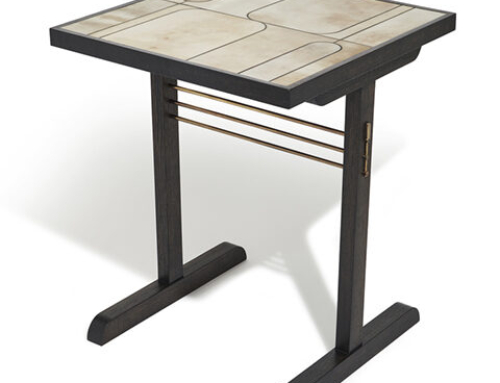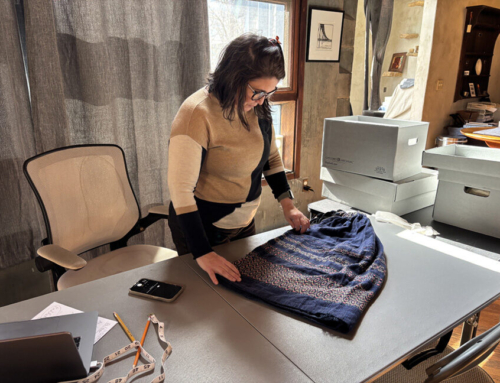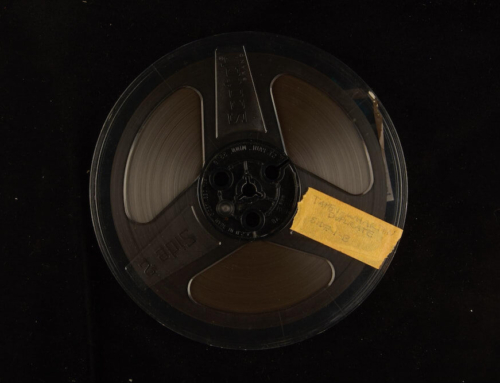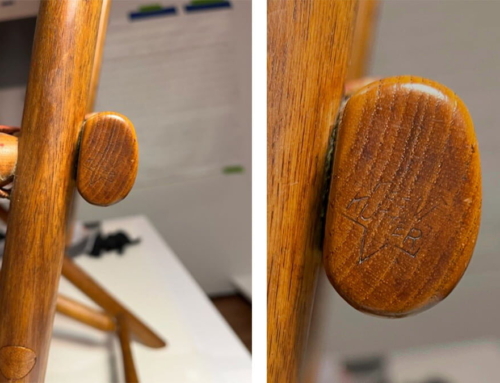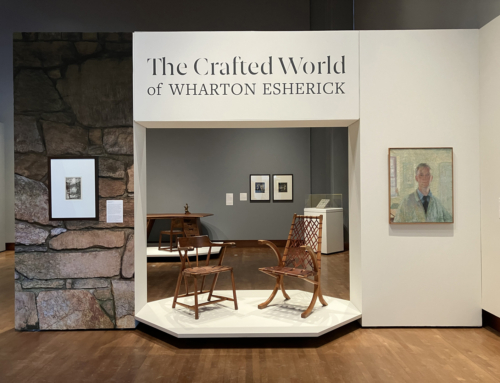
Peter Knecht erected scaffolding to repaint the green windows on the south facade as well as to apply oil to the very thirsty siding.
There is always maintenance work to be done around the Wharton Esherick Studio. This summer, we focused on the wooden addition that Wharton began in 1940. He used long white oak boards and battens as siding, hung on a wooden frame. The tower, as he described it in a letter to his friend Theodore Dreiser, rose above the entrance way on the west side of the stone studio. It was capped with a metal roof. Old photographs show a large “coffin door” on the front of this addition that was used to get furniture in and out of Peter’s second floor bedroom. When the silo was added in 1966, he extended the wooden addition using cedar boards and battens, and added a prismatic extension onto the metal roof.
Wharton would oil the siding with boiled linseed oil to give it some protection from the weather. Of course, the sun, rain and wind take their toll over time, so we periodically like to add fresh oil to the siding. That is not as easy as it sounds — mildew, algae, and lichens find a hospitable living environment on the siding, and must be removed before the oil is added. Peter Knecht scrubbed all of the siding, first with a wire brush, then with a scrub brush to clean off the algae and mildew. He

From the top of the scaffolding, you get a wonderful view of the 1956 studio and it’s lovely twisted chimney. Photo by Laura Heemer.
then washed it with a light bleach solution to kill any remaining organisms, and rinsed it thoroughly to prevent any bleaching of the wood. It was a joy to watch the weathered black and gray boards turn to golden oak as Peter scrubbed.
Then came the oil. In the past, we have mixed a biocide into the oil to slow the re-growth of the mildew and algae. This year we found an exterior oil finish made by General Finishes, that contained both a biocide and ultraviolet filters to protect the wood and finish from the sun’s powerful rays. General Finishes estimates that you can get about 300 sq. ft. per gallon. That is with new wood. Our old, weathered wood was far thirstier. We wound up getting about 60 square feet per gallon, requiring us to reorder twice to get enough oil to complete the job.
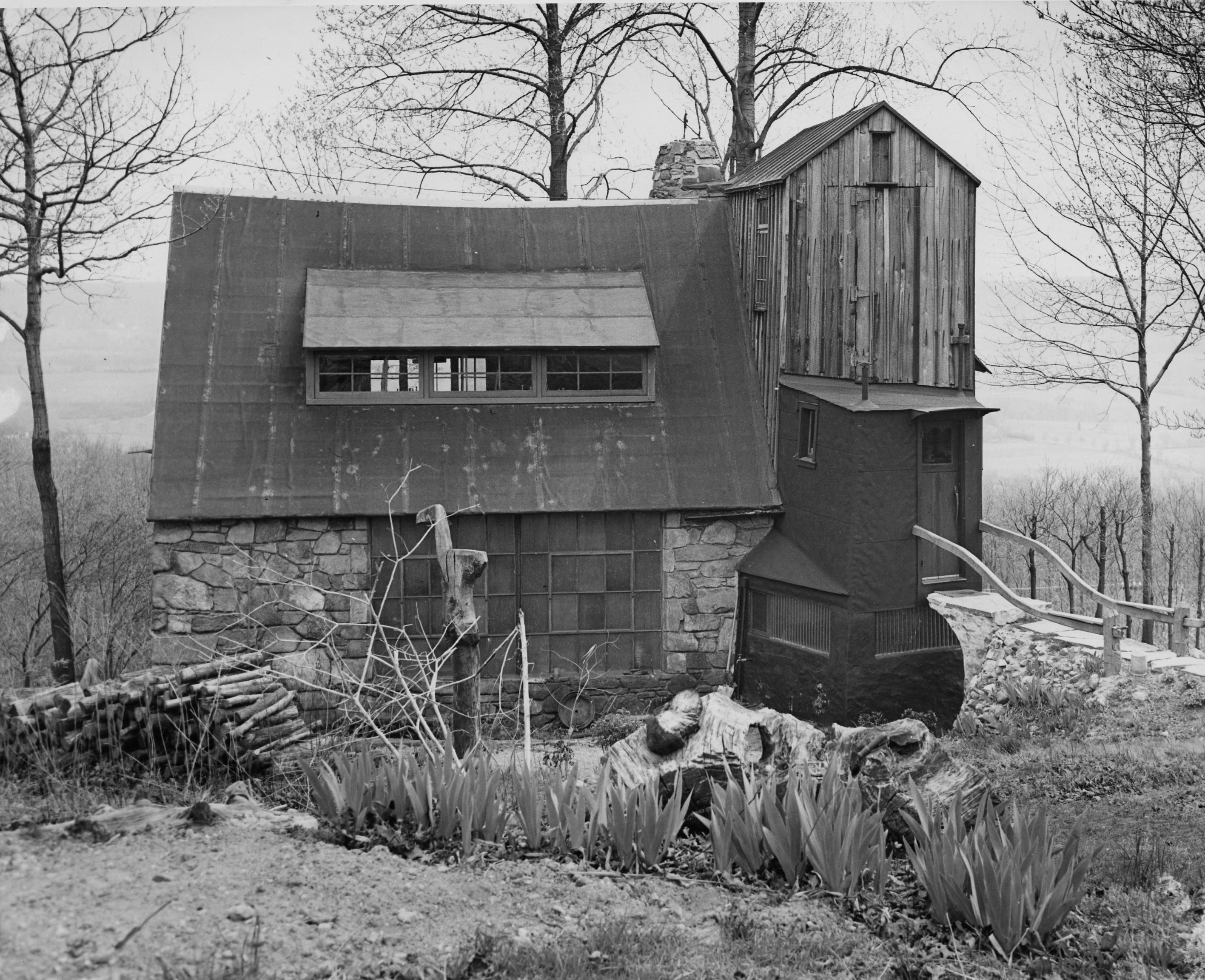
Wharton’s studio as seen in 1947. The sides of the addition have been covered with tar paper and asphalt, prior to cedar siding and stucco. Note the “coffin door” at the north end of Peter’s room for moving furniture in and out. Also, note the view of the Great Valley seen behind the studio. Photo courtesy of the Estate of Wharton Esherick.
To safely cover the south face, Peter erected scaffolding over the Studio entrance. With the scaffolding up, we figured it was a good time to paint the windows as well. Using the color samples from the newly completed conservation manual,
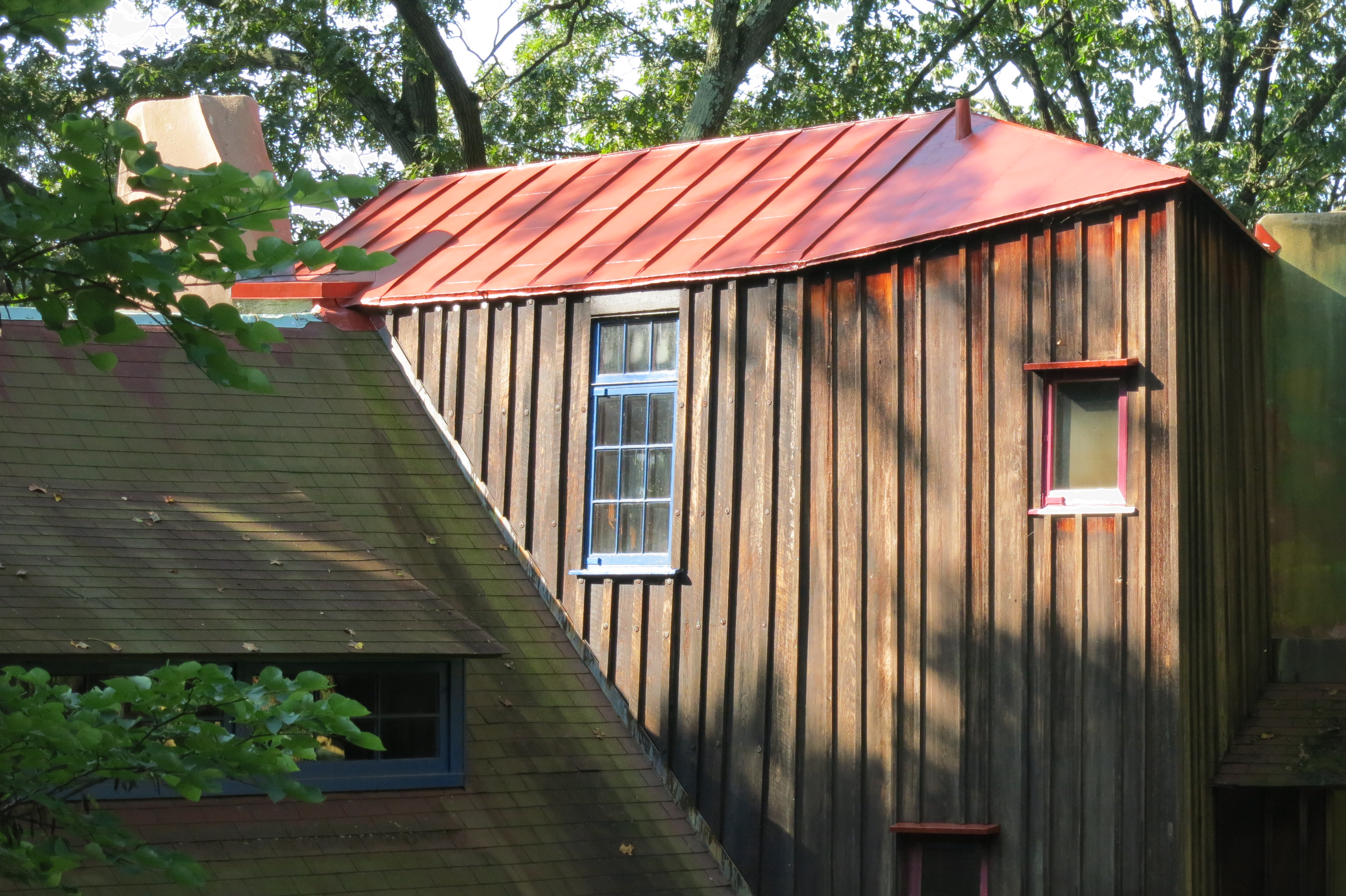
Freshly oiled siding and painted red roof. Notice how the oil brings out the red hues in the cedar siding on the front half of the wooden tower. Both Peter and John did a wonderful job on the restoration. Photo by Laura Heemer.
we selected the appropriate green for these windows.
While Peter was working on the siding, John Madarasz painted the metal roof over the wooden addition. Unlike the copper roof on the workshop which develops a beautiful patina, the metal roof on the studio needs to be kept painted to prevent rust. John worked early in the day to avoid the brutal heat we had this summer, and managed to catch a couple of dry cooler days as well.
With the fresh red roof and the clean and oiled siding, the building looks refreshed. Come out and see it, it’s worth the trip.

